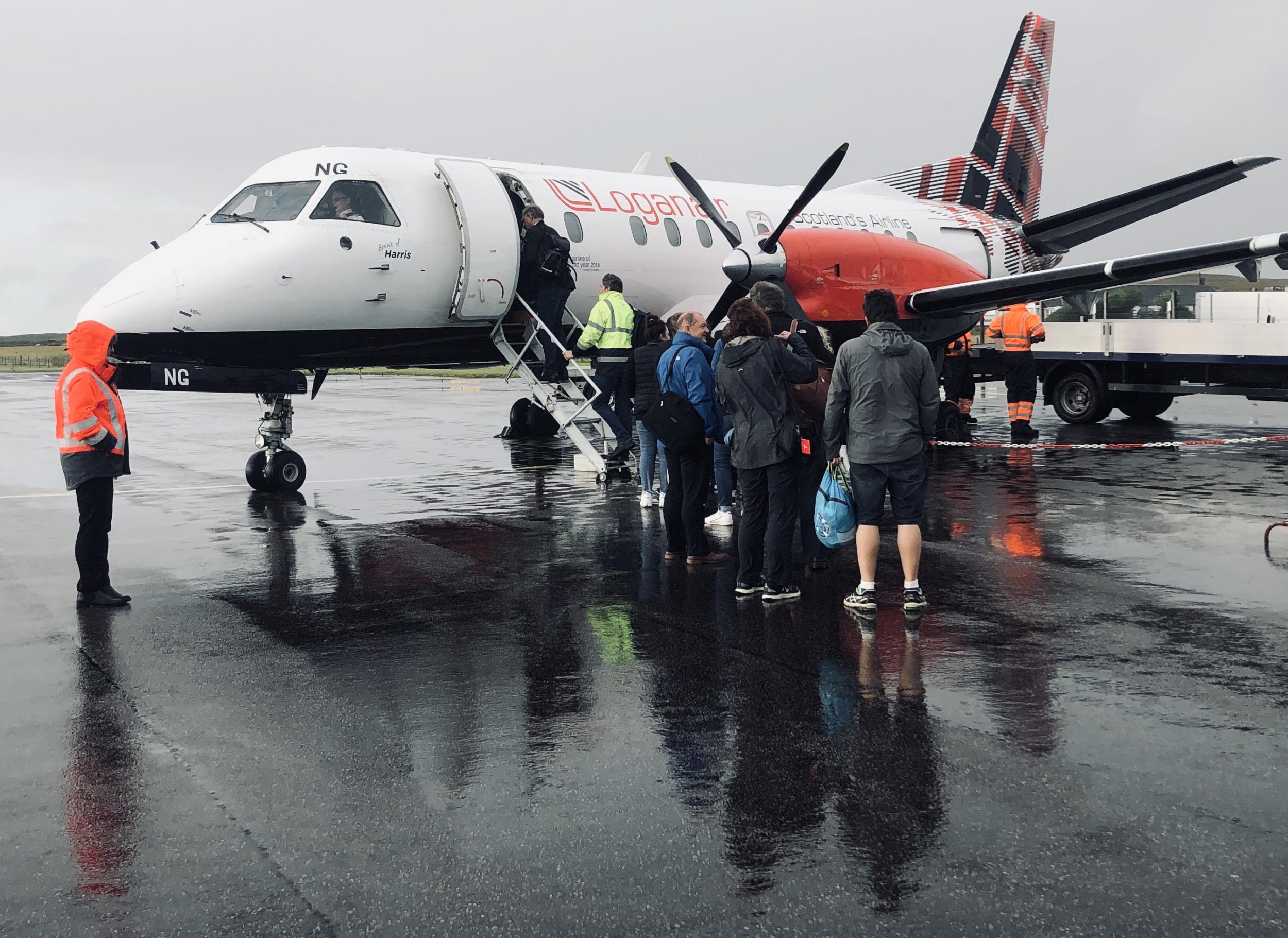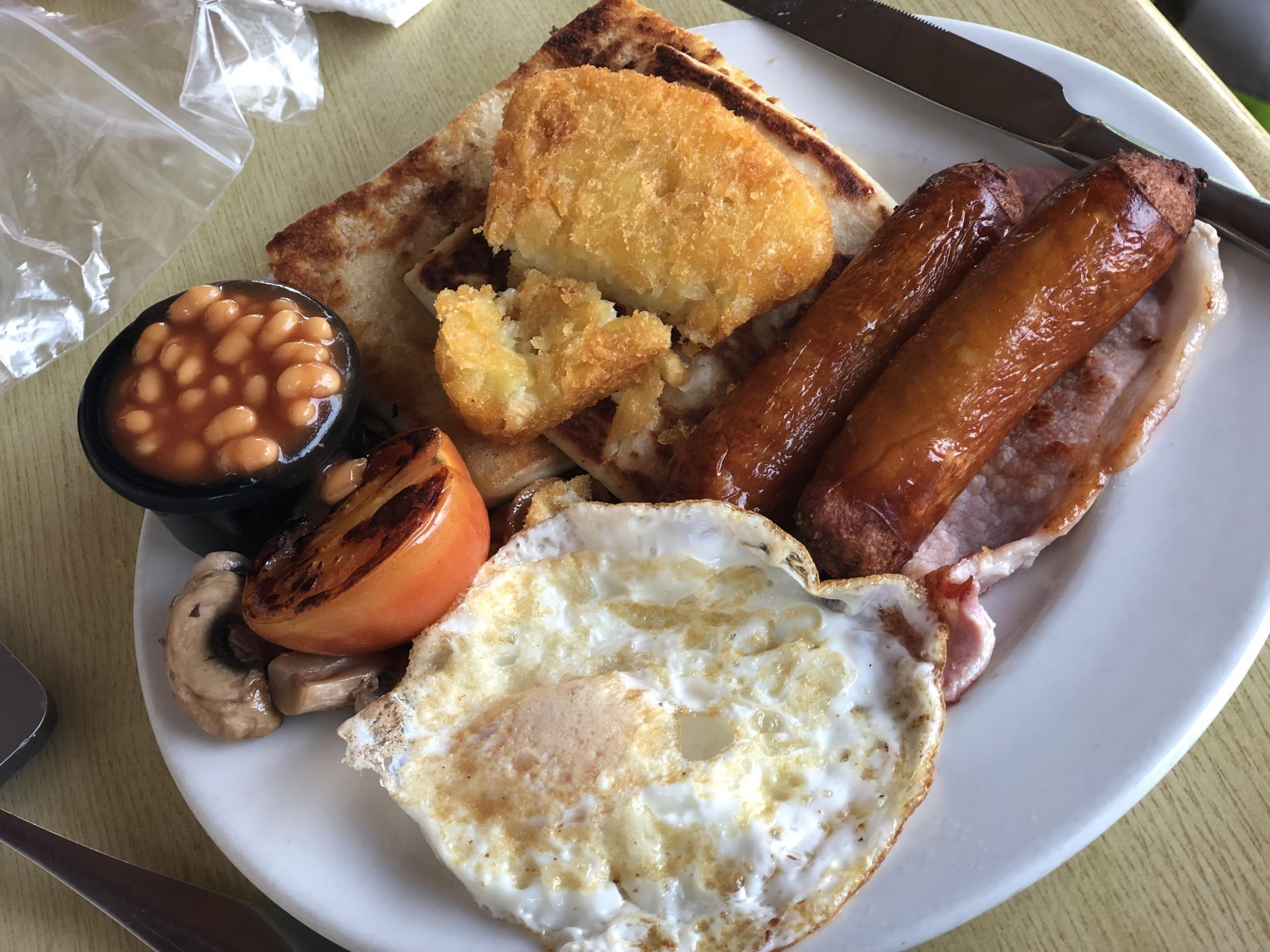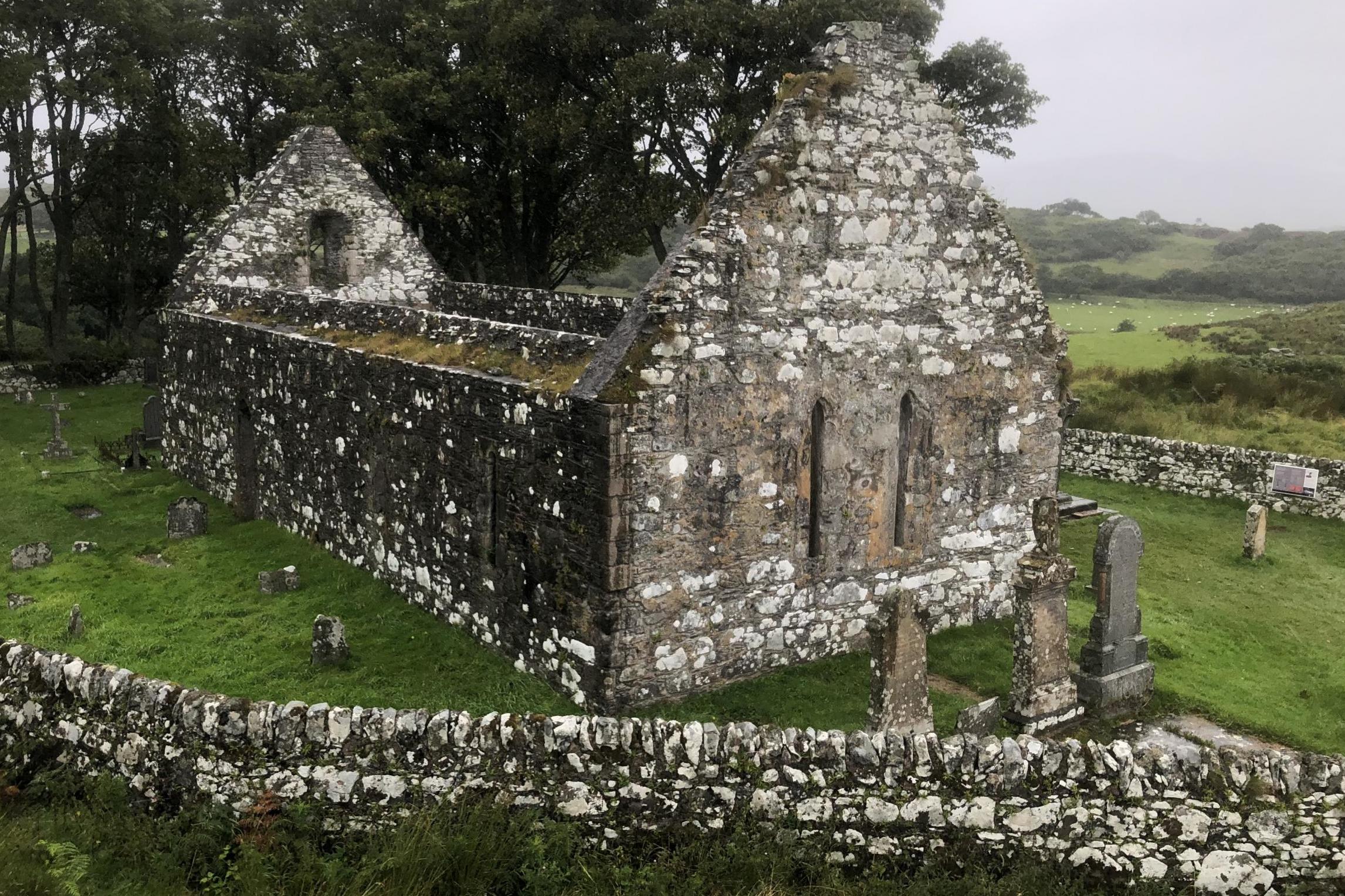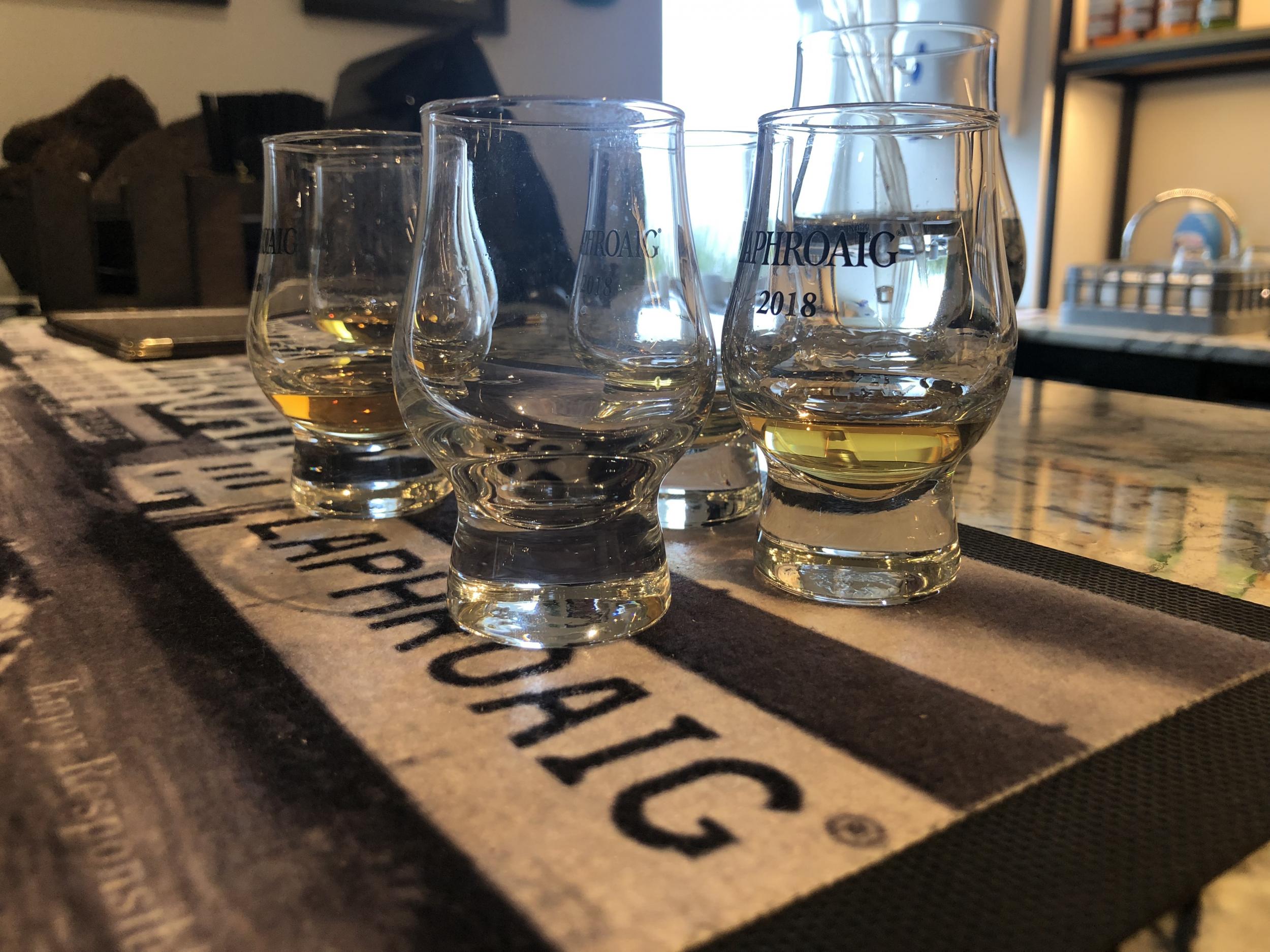Belfast to Glasgow – the pretty way
Seven adventures in seven days: part four, an inter-city journey with an island interlude

Your support helps us to tell the story
From reproductive rights to climate change to Big Tech, The Independent is on the ground when the story is developing. Whether it's investigating the financials of Elon Musk's pro-Trump PAC or producing our latest documentary, 'The A Word', which shines a light on the American women fighting for reproductive rights, we know how important it is to parse out the facts from the messaging.
At such a critical moment in US history, we need reporters on the ground. Your donation allows us to keep sending journalists to speak to both sides of the story.
The Independent is trusted by Americans across the entire political spectrum. And unlike many other quality news outlets, we choose not to lock Americans out of our reporting and analysis with paywalls. We believe quality journalism should be available to everyone, paid for by those who can afford it.
Your support makes all the difference.Our travel correspondent is making the most of the UK in August by taking on a challenge a day. Today: Belfast to Glasgow, the pretty way.
Paul, the guard, was circumspect about the final destination of his train. Shortly after we left Belfast’s Yorkgate station, he announced we were heading for “the City on the Banks of the River Foyle”.
Twenty-one years after the Good Friday agreement, semantics still matter to some Republicans and Nationalists in Northern Ireland. The train’s indicator showed it running to “Derry/Londonderry,” representing the communities’ differing names for the country’s second – but Paul wisely decided to avoid offence.
I was stopping short of “the City on the Banks of the River Foyle”.
My plan for an inter-city adventure between the largest cities in Northern Ireland and Scotland was to take the train to Ballymena, 20 miles north of Belfast, and the bus onward to the port/resort of Ballycastle. From there, I was booked on the 9.30am boat to Port Ellen (Ìlein, to avoid annoying any Gaelic speakers), on the Scottish island of Islay, rounded off with what I hoped would be a spectacular flight as the evening sun flared across the Kintyre Peninsula en route to Glasgow.
A half-hour gap between train and bus at Ballymena provided time to judge which side of the ideological divide this town occupies.
The side of a house in North Street bears a striking circular mural of William of Orange. A gantry built over a dual-carriageway instructs: “Love the Brotherhood, Fear God, Honour the King”. And at the DUP Advice Centre on Church Street, only one piece of advice is visibly on offer: “Vote DUP”.
Yet Ballymena can deliver much more: a Kurdish barber, Brazilian jiu jitsu or, in my case, a personal express bus to Ballycastle. The driver and I had only each other for company as we sped north through lonely hills to the sea. And breakfast.
The sun found gaps in the clouds and fired beams into the bay at Ballycastle. They ricocheted from the sea to the Bay Cafe – which, conveniently, has big bay windows. But before I could pay much attention, I had to devour the house special: the Big Fry (sausage, bacon, egg, beans, tomatoes, hashbrowns, soda bread, toast, tea, all for £6.25).

After the morning feast, I surveyed the horizon. The hills of County Antrim seem surprised to have reached the sea, and collapse. Beyond the tumbling cliffs, through the mist, stands the Mull of Kintyre – the bulky punctuation at the end of Scotland’s Argyll Peninsula.
Dividing the nations: the North Channel. Uniting them: a rather splendid 12-seater fast ferry, the Kintyre Express.
Scotland and Northern Ireland are only a dozen miles apart. Geography suggests that a link between the two significant ports, Campbeltown and Ballycastle, should be a roaring success. But repeated efforts have foundered. Gerry, the skipper of the Kintyre Express, believes the answer is a fast passenger-only ferry with room for bikes.
Mostly it links Ballycastle with Campbeltown, capital of Kintyre. But on summer days it also fits in a trip to the island of Islay. The fare, £60, is commensurate with the cost of the operation – and far better value than the terrestrial alternative, which would take all day rather than just 75 minutes.
The craft was purpose-built three years ago for some of the liveliest seas in the UK. On the North Channel, tide and wind are often in conflict, which creates a lively journey.
We bounce past Rathlin Island, a stepping stone for saints. Imagine a bold letter L turned upside-down, and you have a map of the island. We passed the shorter side, dotted with ghostly, abandoned cottages – a picture of depletion.
Port Ellen, where the marine express arrives on Islay, is a bay of aspiration: neat, white cottages facing southwards in the hope that the sun might deign to appear. (Not a ray had been sighted since leaving Northern Ireland’s shore.)

“Hope” is the message at the foot of an eighth-century Celtic ringed cross, beside the ruins of Kildalton Chapel. The bluestone monument, intricately decorated with Biblical scenes, soars above a pair of modern wooden blocks: one marked “Hope”, the other “Charity”, each spilling over with coins left by visitors. Only in the Hebrides.
Along the lane leading back to Port Ellen, a trio of distilleries are revelling in the whisky boom that Islay is enjoying. Gerry, the Kintyre Express skipper, had told me that three-quarters of the passengers he carries to Islay are on the whisky trail. A smoky, peaty mist seems to linger over each distillery. Visitor centres take tourists deeper into the sorcery of Scotch, which mixes malted barley, water and time.

Islay is known as Queen of the Hebrides. Her capital is not a Paris or Tokyo or Buenos Aires. But Bowmore, as it is known, does have the Lochside Hotel – where you can peer through the murk across Loch Indaal, listen to the rain gods hammering on the roof and thank God you are wolfing down seafood chowder rather than actually being outside.
I ventured out for long enough to marvel at the interior of the Round Church, perched like a beacon above Bowmore. It is perfectly circular, apparently to avoid creating any corners in which Satan might hide.
Spirituality and humanity abound on Islay.
Mobility is trickier. In the OAG Pocket Flight Guide, Islay barely gets a mention between Islamabad and the Isle of Man. On Wednesday you can fly at 9.15am to Glasgow or at 6.25pm to, well, Glasgow.
Yet the airport has many attributes. A bus from Bowmore takes only 10 minutes. The terminal entrance-to-aircraft distance is 100 feet, tops. There is never a queue for take-off or landing. And a cup of tea at the Airport Cafe is just £1.25, and is hereby declared the cheapest and best in Britain. With so few flights, you might imagine business gets quiet. But it is a social hub for the island and popular with passing tourists.
The sun finally smiled on Islay as the Loganair plane turned towards the runway. But soon we soared above the clouds that had haunted Islay all day, cruelly concealing the ravishing west of Scotland. So instead I totted up the cost of going the pretty way between Belfast and Glasgow. Train, bus, boat and plane totalled £163. Steep, for a direct distance of just 104 miles. But priceless as a means to reach the City on the Banks of the River Clyde.
Tomorrow, Simon Calder goes underground on Merseyside
Join our commenting forum
Join thought-provoking conversations, follow other Independent readers and see their replies
Comments